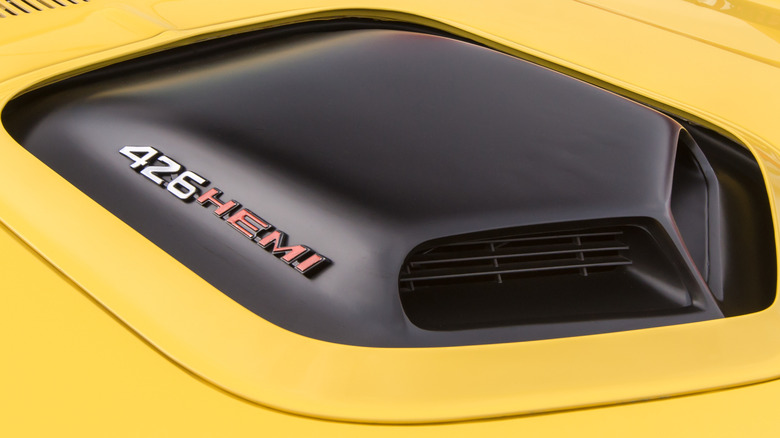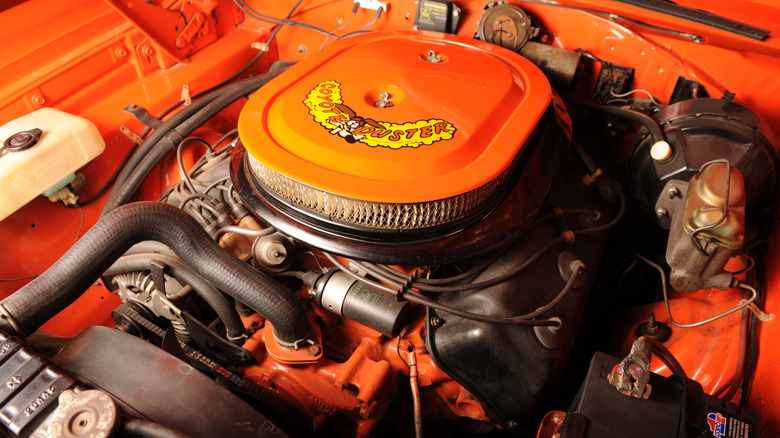What Does HEMI Mean? Here's Where The Engine Got Its Name
Say the word 'Hemi', and images of tire-shredding muscle cars like the Dodge Challenger and Charger spring to mind, alongside hugely capable Ram pickup trucks. While these models certainly have helped to put the Hemi name back into the spotlight over the last two decades, the origins of Hemi engines actually date back over 100 years. The name itself also has nothing to do with these notable models and instead relates to the engine's construction. A Hemi engine is one with hemispherical combustion chambers, with intake and exhaust valves situated on opposing ends of the chamber. Typically, hemispherical engines sport enhanced performance, thanks to good air flow and a shortened burn distance of the air/fuel mixture due to spark plugs being located at the top center of the chamber.
Chrysler-owned brands are often credited for initially developing engines with hemispherical combustion chambers in the early 1950s. However, the very first automaker to develop the tech was a little-known Belgian brand, called Pipe. Pipe manufactured a four-cylinder engine with the unusual engine structure, and although other automakers did attempt to follow suit over the next few decades, it wouldn't really be until Chrysler had a go in the '50s that Hemi engines would really begin to take off. Developments such as the Chrysler FirePower and DeSoto FireDome engines proved that the Hemi engine could work, generating impressive horsepower outputs. It wasn't until the 1960s, though, when Chrysler developed its legendary 426ci V8 that Hemi would begin to develop as a brand in its own right.
Chrysler's 426ci V8 was the first HEMI engine
While hemispherical engines date back to the early 1900s, HEMI engines date to the 1960s, when Chrysler rolled out the mighty 426ci "Elephant Engine". This lump was the first to wear the now iconic HEMI trademark. It was initially developed to blow competing cars into the weeds on NASCAR tracks in 1964, but by 1966 it was being offered in the likes of Dodge's Charger R/T, in addition to a plethora of other Chrysler-owned models.
Street versions of the 426ci weren't as aggressive as the full-blown race engines, sporting a lower compression ratio of 10.25:1, in comparison to the race engine's 12.5:1. Other changes included a milder camshaft profile, alongside different intake and exhaust manifolds, but that didn't stop the 426ci HEMI from kicking out a seriously respectable 425 horses.
Shortly after, muscle cars went into hiding for some decades, thanks to the soaring cost of oil and insurance, in addition to the government clamping down on emissions. However, come 2003 and U.S. automakers had figured out how to start developing high-performance engines again without breaching emissions regulations. This led to the resurgence of HEMI engines, with the first 5.7L HEMI arriving on the scene in 2003. From here, a wide array of HEMI engines would arrive, such as the 6.4L Apache and 6.2L Hellcat. Although the number of offerings is dwindling now, the HEMI remains in production, with Ram confirming the return of the 5.7L HEMI engine for the 1500.

